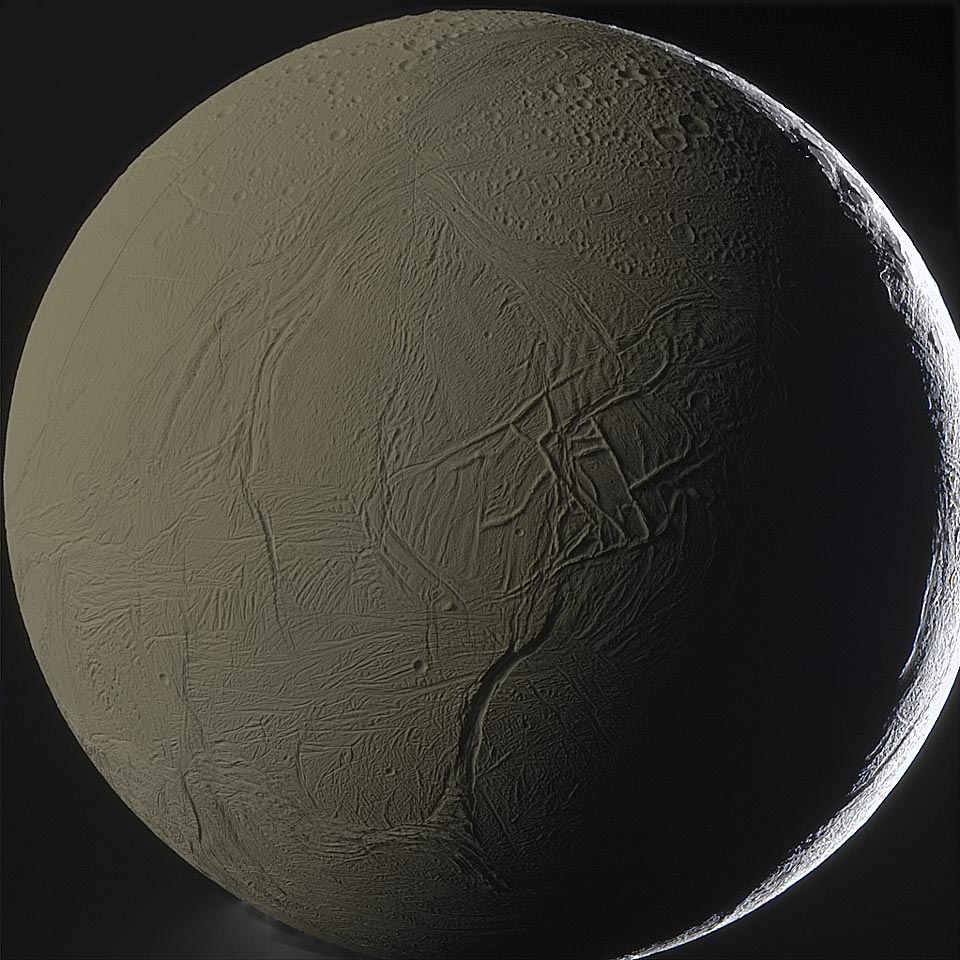2023年2月5日
Enceladus by Saturnshine
Image Credit: NASA; ESA, JPL, Cassini Imaging Team, SSI; Color Composite: Gordan Ugarkovic
Explanation: This moon is shining by the light of its planet. Specifically, a large portion of Enceladus pictured here is illuminated primarily by sunlight first reflected from the planet Saturn. The result is that the normally snow-white moon appears in the gold color of Saturn’s cloud tops. As most of the illumination comes from the image left, a labyrinth of ridges throws notable shadows just to the right of the image center, while the kilometer-deep canyon Labtayt Sulci is visible just below. The bright thin crescent on the far right is the only part of Enceladus directly lit by the Sun. The featured image was taken in 2011 by the robotic Cassini spacecraft during a close pass by by the enigmatic moon. Inspection of the lower left part of this digitally sharpened image reveals plumes of ice crystals thought to originate in a below-surface sea.
Tomorrow’s picture: stars and dust
被土星反照光照亮的土卫二
图像提供: NASA; ESA, JPL, Cassini Imaging Team, SSI; 色彩合成: Gordan Ugarkovic
说明: 这颗卫星在它母行星的照耀下闪闪发光。更精确地说,上面图像中的土卫二之大部分表面,主要是被从土星反照的阳光所照亮。也因此,这颗平常很雪白的卫星,被渲染成土星云顶的金黄色泽。由于反照光大多来自图像左方,使得形如迷宫的山脊向图像的中右方投下明显的暗影,其中深达公里的Labtayt Sulci峡谷之影子,位在这幅图像的中下方。图像右缘的蛾眉亮区,则是土卫二直接受阳光照亮的区域。这幅主题图像,是由卡西尼号太空船摄于2011年近距离飞越这颗谜样卫星之时。如检视这幅经数位锐利化图像的左下角,还可见到咸信是源自表面下海洋的冰晶烟云。
明日的图片:stars and dust







